In San Francisco, you simply don’t need a car on Market Street and the waterfront. In fact, you’ll be happier without one
- Share via
Don’t drive to San Francisco and pay $35 or more per day to park. Don’t fly and then spend steadily on a ride-sharing service or taxicabs. Don’t imagine those storied but slow cable cars will get you everywhere you want to be.
Instead, after that flight to San Francisco or Oakland, followed by the BART ride into the heart of the city, place your faith in those quaint streetcars that rattle along the waterfront and Market Street.
They’ll take you to the Ferry Building’s tempting food shops, of course, and to the tourist fare of Pier 39 and to the Castro District too.
I’ve always thought this was an idea worth exploring. And so in March I did. For three days, I counted on that many-hued streetcar fleet to move me along the waterfront and up Market to the Castro District on the route known as the F-line. (There’s also an E-line that covers the Embarcadero, then dips south to AT&T Park, where the Giants play, and 4th and King streets.)
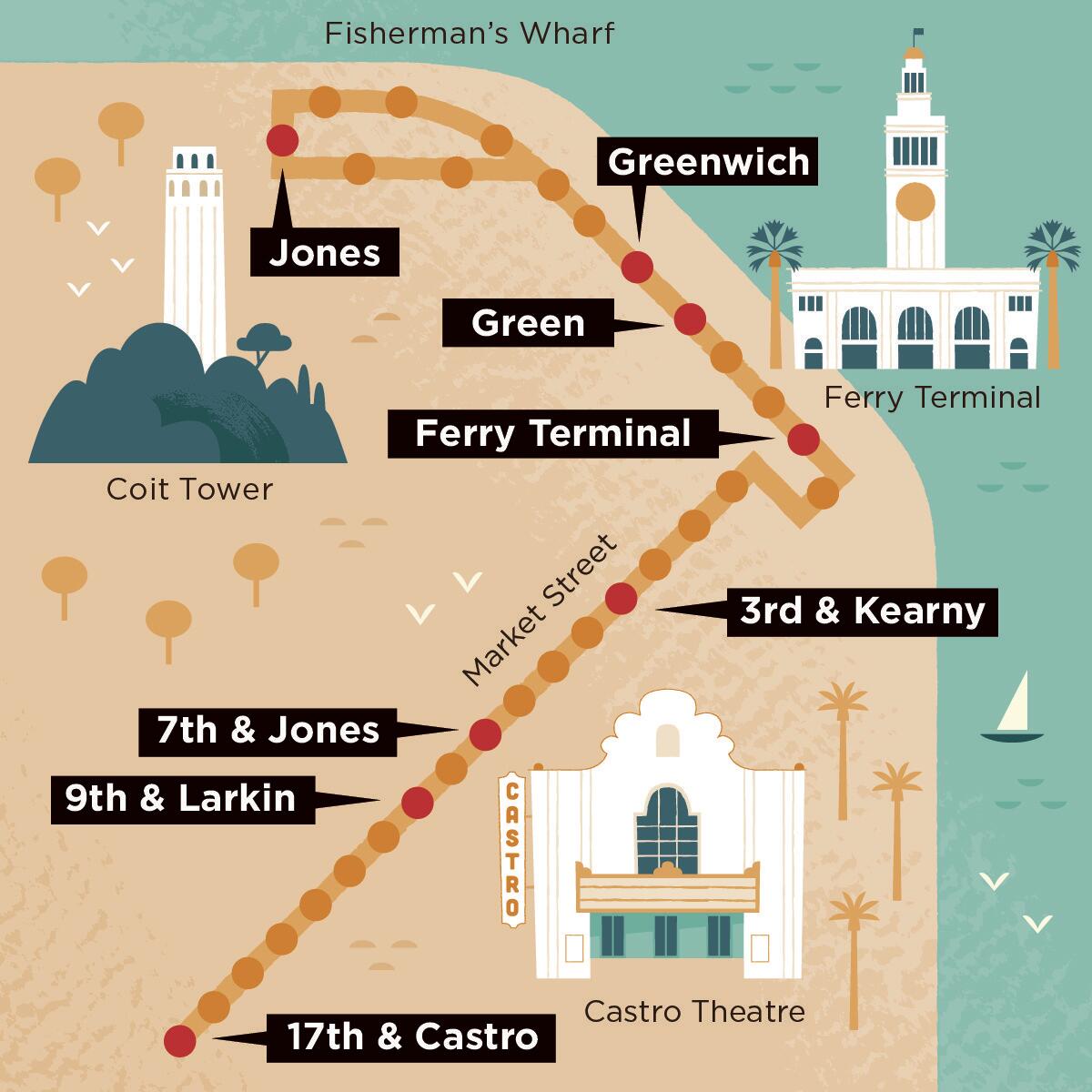
First, about the cars themselves: As many as 20 reconditioned vintage cars roll at any one time, most dating from the 1930s, ’40s and ’50s. Their color schemes pay tribute to streetcar systems from around the world, most abandoned long ago.
And yes, train-geek Angelenos, they have a Pacific Electric red car (though it never operated in Southern California) and an orange car to honor Los Angeles Transit Lines.
The streetcars are supposed to run every six to 15 minutes, and for me they did, except on one afternoon when the wait was 20 to 25 minutes. A single ride costs $2.75, so it’s a better bargain to buy a Muni pass (one day for $21, three days for $32, a week for $42), which lets you ride streetcars, cable cars and Muni buses.
Now, here’s some of what you’ll find on the way:
Fisherman’s Wharf
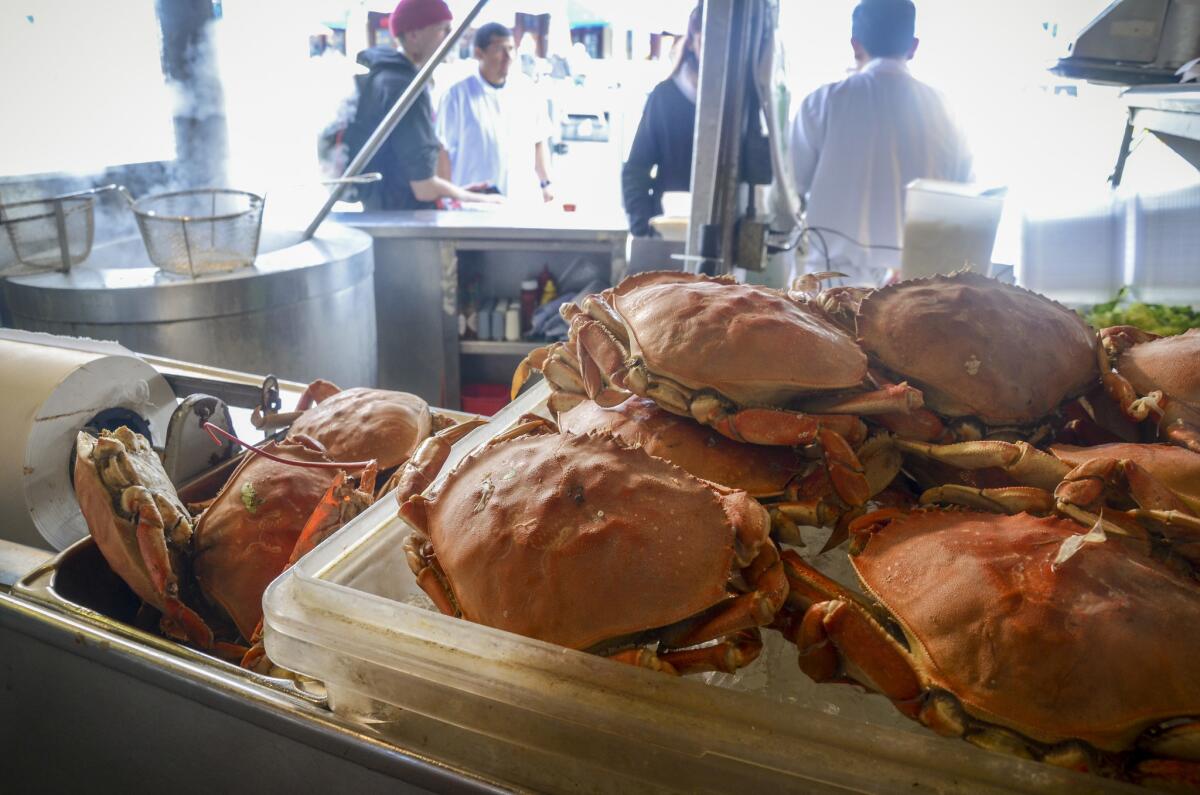
Even if you’ve been to San Francisco a dozen times, well-trafficked Fisherman’s Wharf and environs are likely to figure in your plans. The streetcar begins its turnaround at Jones and Jefferson streets, where you can hop off.
Need a place to stay? Walk three minutes west (by Google’s reckoning) from Jones and Jefferson and you will arrive at the Argonaut Hotel (495 Jefferson St.; [800] 790-1415), a well-placed but high-priced family lodging with an entertaining nautical theme. (Rates typically start at about $440 a night.)
Heading east through the Fisherman’s Wharf area, you can play vintage arcade games and mechanical musical instruments at the Musée Mécanique (Pier 45; [415] 346-2000) about three minutes east of Jones Street. Or tear into a hunk of fresh sourdough bread at the Boudin Bakery and Cafe (160 Jefferson St.; [415] 928-1849) or just watch the bakers through the big window. At Pier 39, a 10-minute walk east of Jones and along the streetcar route, you can browse dozens more tourist-oriented shops and restaurants, and listen for sea lions.
Before you bid goodbye to Fisherman’s Wharf, you might want to pause at the streetcar’s Mason and Beach streets stop. From there, it’s a five-minute walk (about four blocks) to North Beach and one of the city’s oldest and more affordable lodgings: The San Remo Hotel (2237 Mason St.; [415] 776-8688), housed in a rambling 1906 Victorian structure.
There’s only one room with a private bath (the penthouse), but there are about 60 other snug, serviceable rooms that share bathrooms down the hall. Rates sometimes dip below $100 a night and rarely rise about $159, which makes it a favorite of frugal travelers.
Embarcadero

Hope off the streetcar at Greenwich Street and you have two strong options. One is to grab some grub and a beer by the water and (if it’s night) listen to jazz at snug, welcoming Pier 23 Cafe (Embarcadero; [415] 362-5125)just across the street.
Or you could walk three minutes west to the base of the Filbert Steps and start climbing. Those steps will take you up
This detour is worth some time, because the fascinating ’30s murals at the base of the tower were made brighter and bolder by a 2014 cleanup. That same upgrade improved the top of the tower (that’s an elevator ride, not a climb), where views of the city and bay are as wide as can be — a full 360 degrees. The tower admission charge is $8 for adult out-of-towners, $6 for locals.
As your streetcar continues along the Embarcadero, the next stop is Green Street. If you hate science by all means keep riding. If, however, you have some interest in how the physical world works, or your kids do, it’s just a few steps to the Exploratorium (Pier 15; [415] 528-4444. $29.95 for adults, $19.95 to $24.95 for children and students ages 4 to 17).
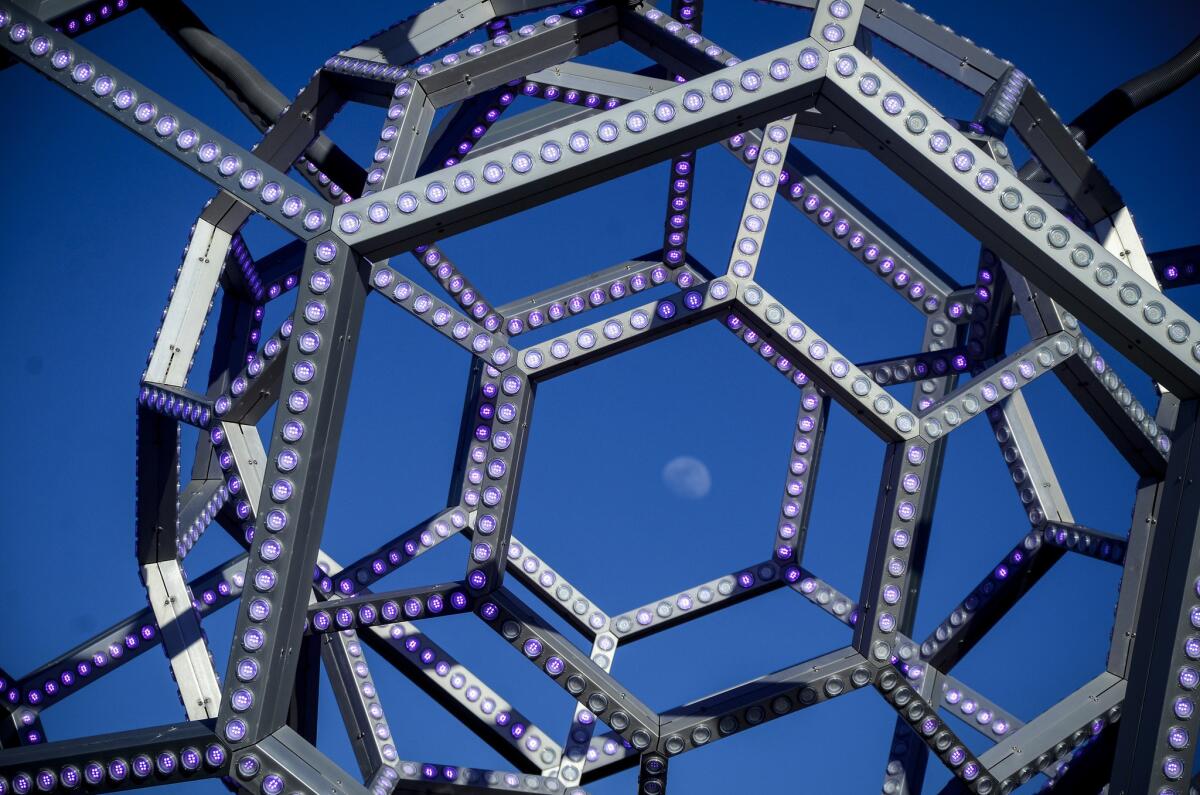
If the price seems steep, well, it costs nothing to stroll through the swirling mist of its Fog Bridge, now operational again after a drought hiatus.
Many people like to walk or bike on the Embarcadero between Pier 15 and the Ferry Building — it’s an eight-minute journey, often windswept, past a formerly industrial waterfront that’s now full of restaurants and other genteel uses. Whether you walk that distance or exit the street car at the Ferry Building stop, the ferry complex has plenty to keep you busy.
If it’s a Saturday (8 a.m.-2 p.m.), a Tuesday or a Thursday (10 a.m. to 2 p.m. both days), you’ll want to nose around the Ferry Plaza Farmers Market. And no matter the day, you may want to sit down to a casual Mexican lunch at Mijita (Ferry Building Marketplace No. 44; [415] 399-0814) or an upscale Vietnamese modern dinner at the Slanted Door (Ferry Building Marketplace No. 3; [415] 861-8032).
Either way, give yourself a few minutes to marvel at the merchandise that fills the long, airy, 1898 building: mushrooms; pig parts; artisan bread, cheese and desserts; travel books; fancy ceramic dishes; premium ice cream.…
RELATED: Carless in Los Angeles | San Diego
After that, the nuts and bolts of streetcar history might seem uninteresting. But these machines are carrying you around, and their history is an absorbing tale told in the San Francisco Railway Museum and Gift Shop, (77 Steuart St.; [415] 974-1948) a few steps from the F-Line’s Steuart Street stop and a long block from the Ferry Building.
Even if nothing else in the tiny space grabs your attention, you’ll be spellbound by a 12-minute documentary snippet shot on a ride along Market Street just before the 1906 quake.
On the same block, about a minute’s walk from the Steuart Street streetcar stop, is a sleek place to stay better suited to an anniversary weekend than a family jaunt: the boutique Hotel Vitale (8 Mission St.; [888] 890-8688), which has a spa, restaurant and terraces with great views of the bay. Fall rates begin at about $400 a night.
Up Market Street
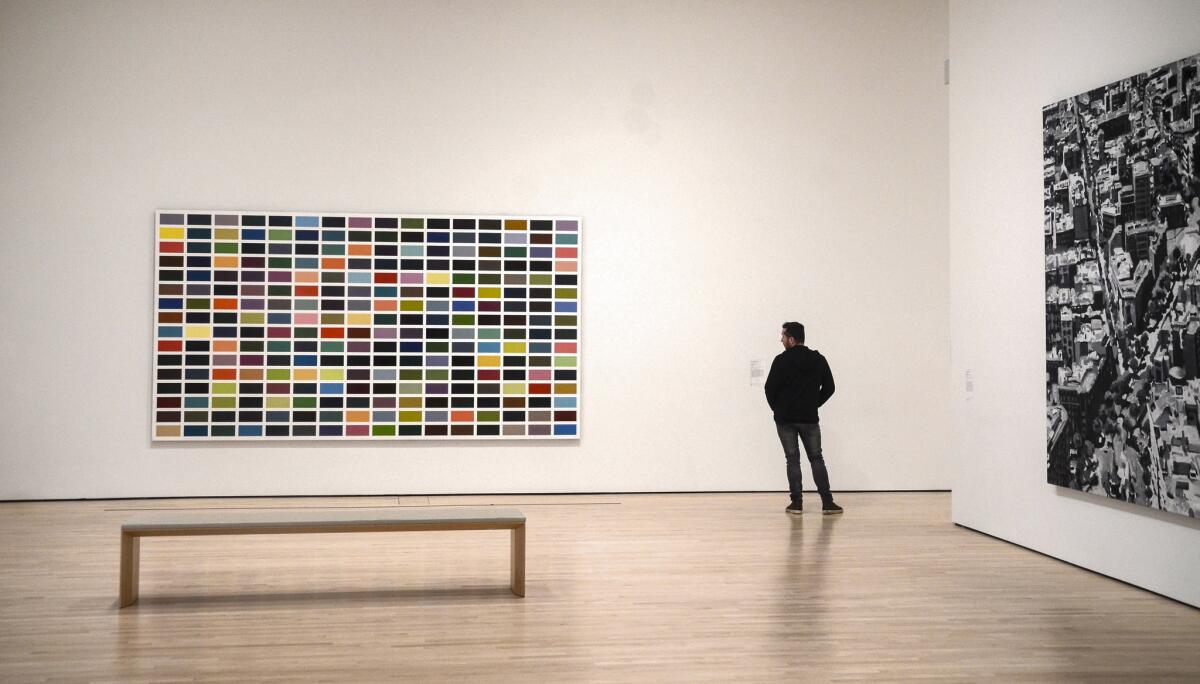
Market has been a gritty thoroughfare for a long time, but gentrification is changing things.
At the streetcar’s 3rd and Kearny streets stop, hop off and head south on 3rd for four short blocks. There you’ll find SFMOMA (151 3rd St.; [415] 357-4000. $25 per adult; closed Wednesdays), one of the West’s premier contemporary art museums.
Its Mission Street neighbors (all within four minutes’ walk) include the California Historical Society (678 Mission St.; [415] 357-1848); the Museum of the African Diaspora (685 Mission St.; [415] 358-7200) and the Contemporary Jewish Museum (736 Mission St.; [415] 655-7800).
If you hop off the streetcar at its 5th and Powell stop, you’ll be in the heart of the San Francisco tourism maelstrom, a few steps from the Powell-and-Market cable car turnaround and about three blocks south of the nearly infinite shopping options of Union Square.
RELATED: Carless in Los Angeles »
About halfway between the Powell streetcar stop and Union Square stands the Hotel Stratford (242 Powell St.; [415] 397-7080), a plain budget hotel where I’ve stayed twice recently. It can be loud, but rates sometimes start at less than $200, which isn’t easy to find in that area.
At the streetcar’s 7th and Jones street stop, you’re edging into the Civic Center, home to some of the city’s meanest streets. But things change. You could leap off to catch the latest American Conservatory Theater production at the Strand Theater (1127 Market St.; [415] 749-2228), whose facade glows red in the evening.
At the 9th and Larkin streetcar stop is The Market (1355 Market St.; [415] 767-5130), a food hall with an industrial flair that takes up most of the block between 9th and 10th. Who are all these young, prosperous customers? The answer: Twitter headquarters is upstairs.
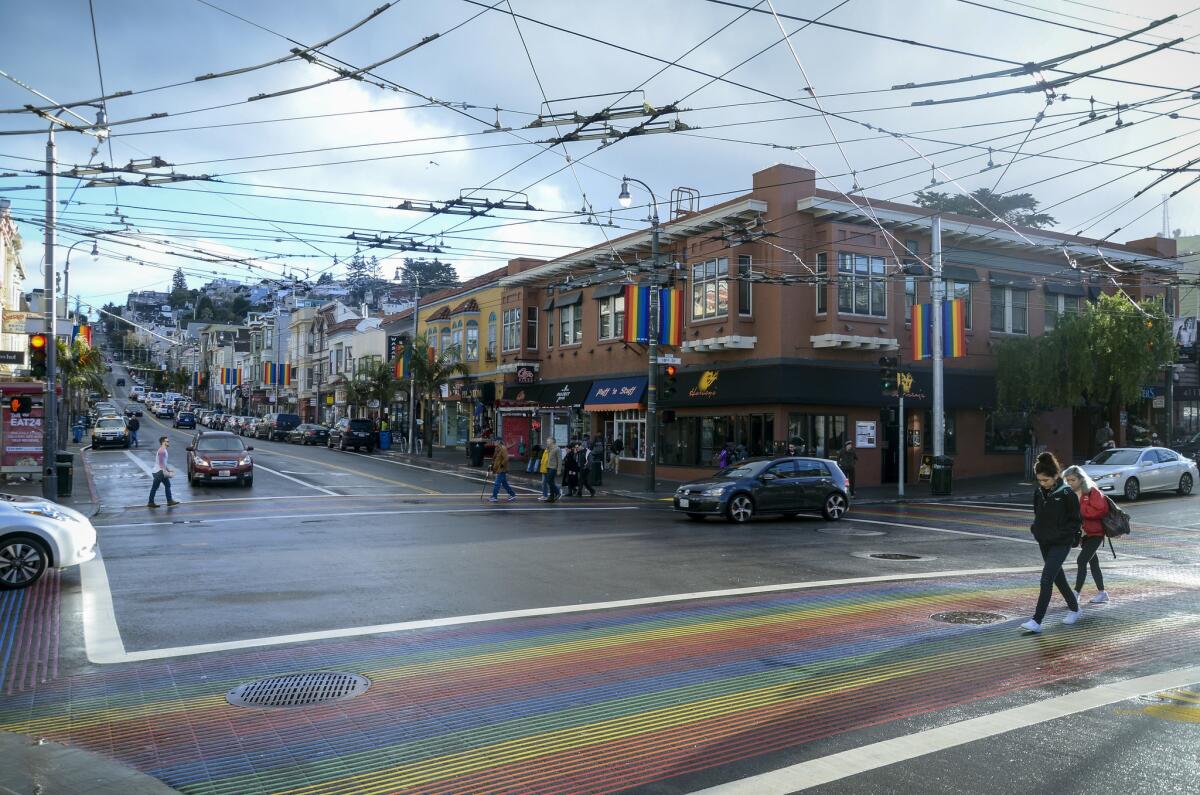
From here, it’s a quick ride to the end of the line at Castro Street and, just like that, you’re at the gateway to one of America’s most famously gay neighborhoods.
The Twin Peaks Tavern (401 Castro St.; [415] 864-9470) has been an icon for years. A couple of doors down, and less than three minutes from the streetcar stop, the Castro Theater (429 Castro St.; [415] 621-6120) has made movie sing-alongs a more or less weekly thing. Among this year’s sing-alongs: “Moana,” “Mary Poppins” and — attention, homesick Angelenos — “La La Land.”
christopher.reynolds@latimes.com
Follow Reynolds on Twitter: @MrCSReynolds
Sign up for The Wild
We’ll help you find the best places to hike, bike and run, as well as the perfect silent spots for meditation and yoga.
You may occasionally receive promotional content from the Los Angeles Times.




